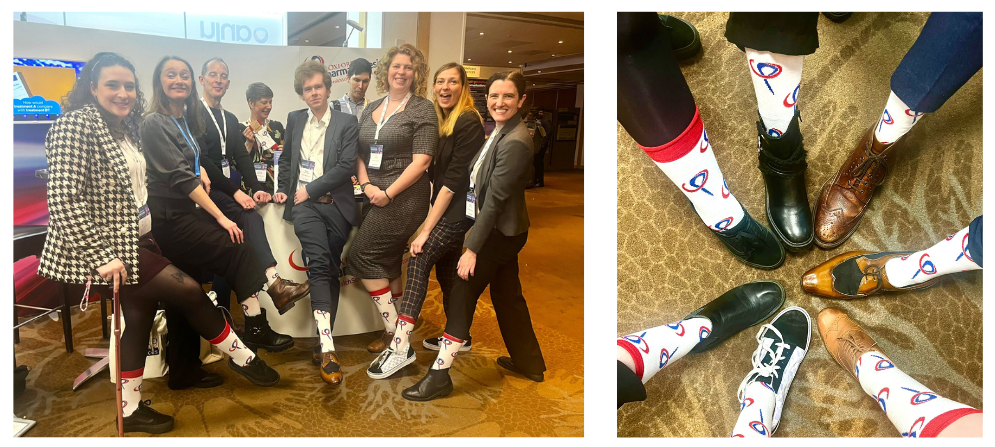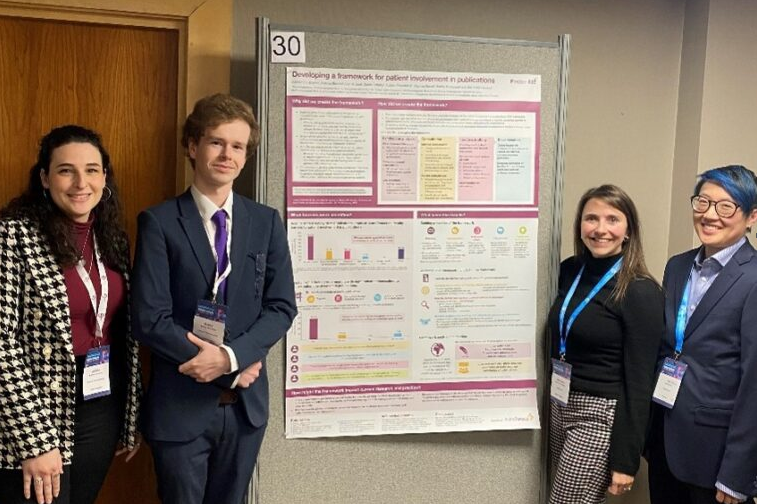Bobby's recap: navigating the European Meeting of ISMPP as a Senior Medical Writer at Oxford PharmaGenesis
05 February 2024
Share this page

The 2024 European meeting of the International Society for Medical Publication Professionals (ISMPP), held on 23–24 January 2024, saw professionals from all areas of medical communications gather in the Novotel London West to shelter from some quintessentially British weather. I started working at Oxford PharmaGenesis only a couple of months before the world locked down in response to COVID-19, so this was my first chance to attend a conference in person, and it was a great experience! From attending inspiring keynote sessions to reading the different research presented in the poster hall, ISMPP Europe was full of brilliant opportunities to learn and grow.
One of the first sessions of the event was a plenary session titled ’Medcomms 2030: A Blue Sky and Black Cloud Perspective’. Moderated by Jocelyn Woodcock of Caudex, this session saw James Dathan (AstraZeneca), clad in an incredibly daring suit with a blue-sky print, present an optimistic view of how our industry might have changed for the better by the year 2030. This was countered by Bethany Whalley (Novo Nordisk), who presented a more cynical and pessimistic view of how things might have changed for the worse. Will generative artificial intelligence (AI) enhance public access to science through the creation of plain language summaries, or will it be used to output lazy, factually misleading content with little human oversight? Will the role of patients as authors evolve to be the industry standard, or will perceptions of bias and pharma meddling shut down the patient voice? Although the presentation was hugely speculative, it was still interesting to consider the challenges the industry will face in the years to come.

Another highlight of the conference was a session on ’Humanizing AI & Building Trust’. Presented by Nell Watson of the Institute of Electrical and Electronics Engineers Standards Association, this session gave a broad-strokes overview of the history of AI and how it is poised to change not just medical communications, but all areas of science and medicine. The session highlighted both the opportunities that AI presents us and the perils that it might pose, including ‘shadow AI’ being used without disclosure, leaks that could result from improper use of large language models, and questions and concerns about intellectual property rights when using generative AI. As everybody scrambles to get ahead of the curve on AI, it’s important to bear in mind the problems that it can present.

Another plenary session titled ’From Blue Sky to Bottom Line: Getting Innovation Off the Ground’ presented two case studies of innovative projects – both of which were supported by Oxford PharmaGenesis. One project showed results from a pilot study using machine learning algorithms to speed up systematic literature reviews. Another project focused on developing a framework to guide involving patients as authors and reviewers on pharma-sponsored publications – a project that I was involved in developing alongside our client! It was for this second project that I was also co-author on a poster presented at the event, a particular point of pride given it was the first publication of any type that had my name in the byline! You can view the poster here.
Probably coming as a surprise to nobody, one of the prevailing themes of the conference was the role of AI in our industry. Many presenters discussed the topic of AI, and the poster hall contained many presentations on the topic. Presenters had trialled the use of AI to streamline literature reviews, create and improve plain language summaries, and predict and maximize the impact of an article before publication. Although we’re all still brainstorming ideas to figure out how best to utilize AI, it’s clear that the technology has potential. Indeed, the change has already begun: the first draft of this very article was written by prompting our in-house AI tool Paige – followed, of course, by successive refinement by my capable human hands! As you’ll no doubt have heard by now, AI is here to stay, but it’s up to us to make sure that it’s used in the right way.
On the whole, ISMPP Europe was a lovely experience. It was a chance to deepen my understanding of the industry and meet clients face to face, breaking down that screen barrier. Although it’s wonderful to read positive feedback in emails from clients, nothing quite compares to getting to have a chat with another human in person! It was also a great chance to read some posters and get some inspiration for my own work. Hopefully, if I can put this inspiration into practice, it can help me to deliver much more impactful poster designs.
